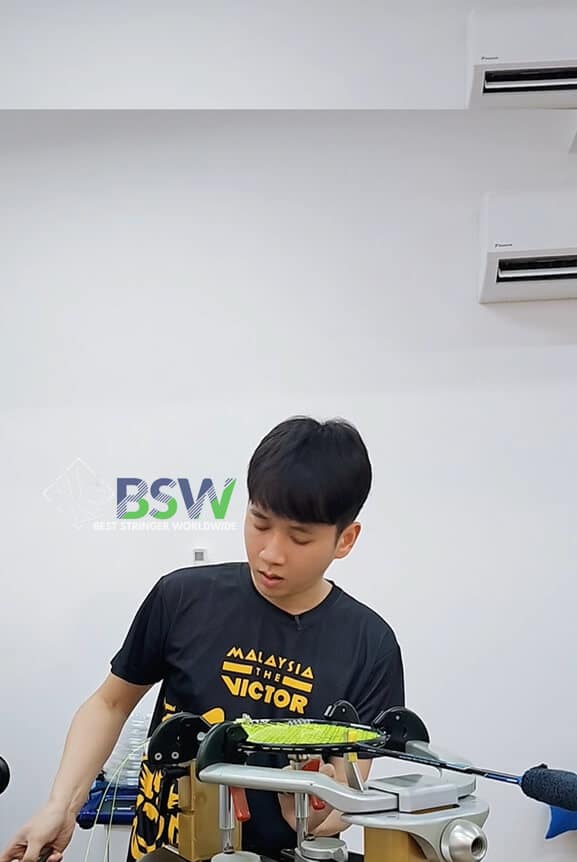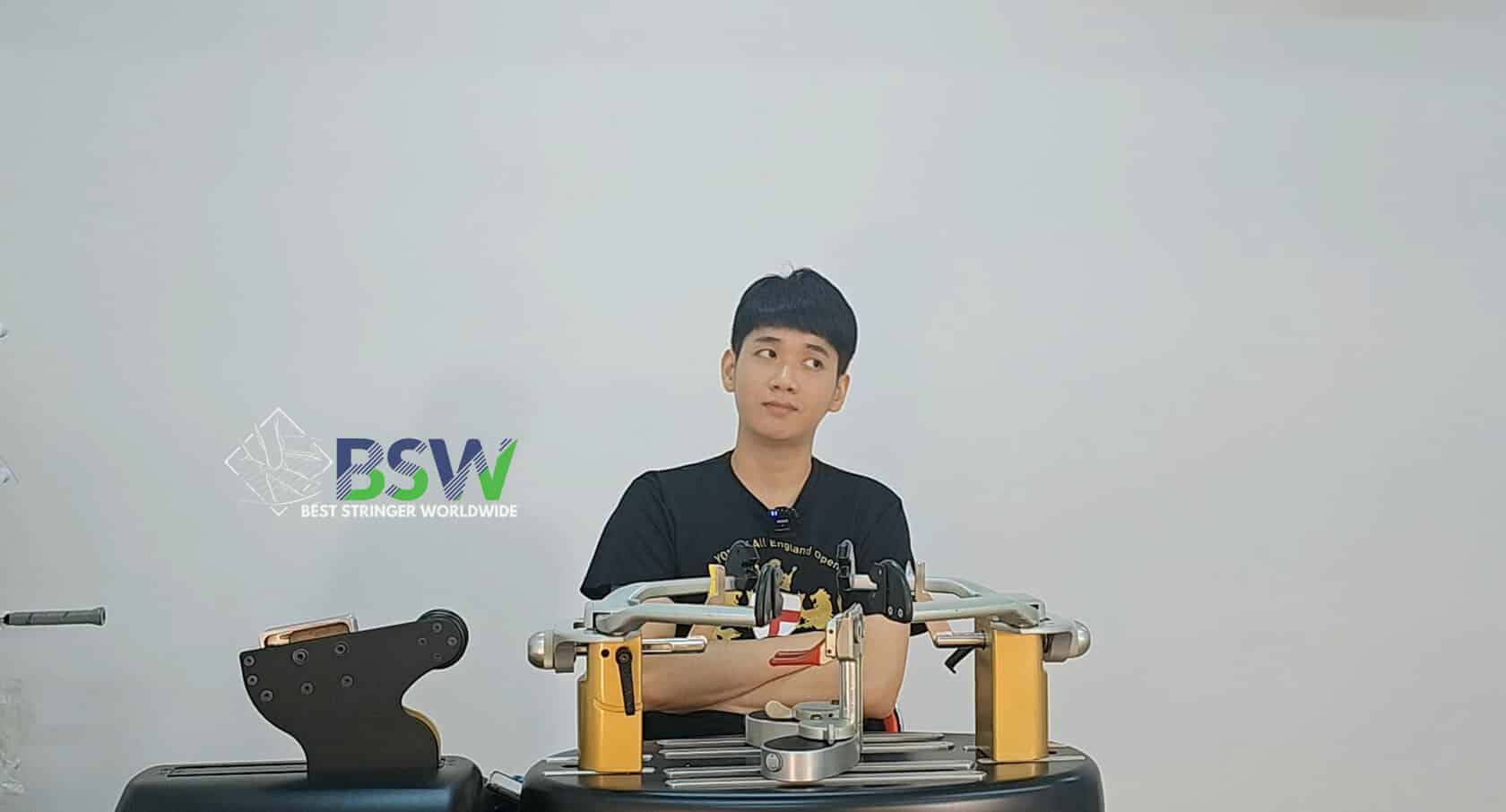Interactive Racquet Vibration Simulator
Welcome to Best Stringer Worldwide’s (BSW) in-depth exploration of badminton racquet vibration and shock. As leaders in badminton stringing education, we’ve created this guide to help players and aspiring stringers understand how racquet design impacts performance and player comfort. Whether you’re considering our badminton stringing course or simply want to improve your game, this knowledge is crucial for making informed decisions about your equipment.
The Science of Racquet Vibration and Shock
When a badminton racquet strikes the shuttlecock, two distinct phenomena occur: vibration and shock. Understanding these concepts is essential for players and stringers alike, as they significantly impact both performance and player comfort.
Shock: The Immediate Impact
Shock occurs at the precise moment of impact between the shuttlecock and the racquet. It’s characterized by:
- A short duration
- High intensity
- A single, loud sound
- A strong, immediate sensation felt by the player
Shock is the primary culprit behind conditions like tennis elbow, making it a crucial factor to consider in racquet design and selection.

Vibration: The Lingering Effect
Vibration is the racquet’s response to the shock of impact. It continues after the shuttlecock has left the string bed and is characterized by:
- A longer duration compared to shock
- Lower intensity
- A sustained, humming sound
- A subtle, ongoing sensation felt by the player
While vibration is less likely to cause injury, it can contribute to player fatigue and affect overall comfort during extended play.
Quick Quiz: Test Your Knowledge
1. Which phenomenon is more likely to cause tennis elbow in badminton players?
Factors Influencing Vibration and Shock in Badminton Racquets
Several factors contribute to the vibration and shock characteristics of a badminton racquet:
1. Frame Material
The choice of frame material significantly impacts a racquet’s vibration and shock properties. Modern racquets typically use materials like carbon fiber, which offer a balance of stiffness and vibration dampening. In our badminton stringing courses, we delve deep into how different materials affect racquet performance.
2. Frame Thickness and Width
Manufacturers often adjust the frame’s thickness and width to fine-tune its stiffness. A thicker frame generally results in:
- Increased stiffness
- Higher shock
- Reduced vibration
Conversely, a thinner frame typically offers more flex, lower shock, and increased vibration.
3. Frame Stiffness
The overall stiffness of the frame is a crucial factor:
- Stiffer frames: Increase shock, decrease vibration, produce higher-pitched sounds
- More flexible frames: Decrease shock, increase vibration, produce lower-pitched sounds
Finding the right balance is essential for optimal performance and comfort.
The Impact on Player Experience
Understanding how vibration and shock affect the player is crucial for both equipment selection and stringing techniques. Here’s how these phenomena influence the playing experience:
1. Comfort and Fatigue
Excessive vibration can lead to player fatigue during extended matches. However, some players prefer a certain level of vibration for better “feel” of the shuttlecock. Our racquet stringing certification program teaches stringers how to balance these factors for optimal player comfort.
2. Injury Prevention
Shock is the primary concern when it comes to injuries like tennis elbow. Racquets designed to minimize shock can help prevent these issues, especially for recreational players or those prone to such injuries.
3. Performance
The right balance of vibration and shock can enhance a player’s performance:
- Power players may prefer stiffer frames for more shock and less vibration
- Control-oriented players might opt for more flexible frames with increased vibration and less shock
| Frame Type | Stiffness | Shock | Vibration | Suitable For |
|---|---|---|---|---|
| Stiff | High | High | Low | Power players |
| Flexible | Low | Low | High | Control-oriented players |
| Balanced | Medium | Medium | Medium | All-round players |
Practical Tips for Players and Stringers
At Best Stringer Worldwide, we believe in empowering players and stringers with practical knowledge. Here are some tips to manage vibration and shock:
- For existing racquets, adding weight to the frame is the most effective way to reduce shock.
- Experiment with different string tensions to find the optimal balance between power and control.
- Consider using vibration dampeners, but be aware that they primarily affect the sound rather than the actual vibration felt by the player.
- When selecting a new racquet, consider

About Best Stringer Worldwide
Best Stringer Worldwide is a comprehensive badminton and tennis stringing education program. We provide in-depth training on stringing techniques, racquet technology, and player-specific customization. Our curriculum is designed to help stringers understand and meet the needs of all badminton players, from casual enthusiasts to competitive athletes.
Read More